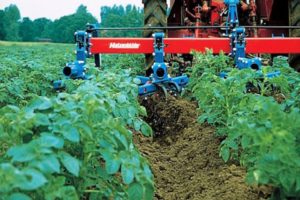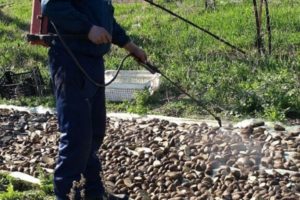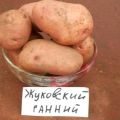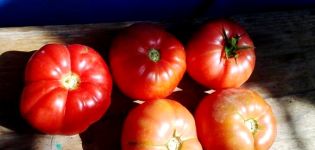Description of the Bellarosa potato variety, its cultivation and care
In the spring, it's time to think about what kind of crop to grow on your site. Bellarosa potatoes will suit everyone. It is drought tolerant, unpretentious and very productive.
Content
Features of the variety and description
The potato has several names: white rose, white dew, bellarose. A detailed description of the variety will make it clear why this particular type of root crop should be grown:
- Plant height: 75 cm.
- The bush is upright.
- The flowers are purple.
- The root vegetable is oval with a thick skin of light or dark pink color.
- Vegetable mass from 90 gr. up to 700 gr.
- The number of tubers in a bush is 7-10 pcs.
- The eyes are shallow.
Features:
- Early maturity.
- Flowers are sometimes missing.
According to numerous positive reviews, the variety has established itself as one of the best.
Positive properties
A white rose potato that has many positive qualities. These include:
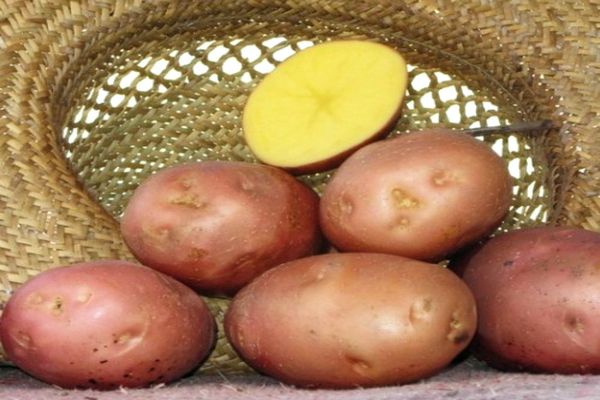
- Drought tolerant. This trait is especially appreciated by those who plant entire potato fields. In the event that automatic irrigation is not equipped.
- Early maturity. Ready to use in just 2 months. Dig in 1.5 months after germination.
- High yields. From 1 hectare yields about 35 tons of root crops.
- Unpretentiousness. Bellarosa potatoes can grow in any kind of soil. Only the clay composition of the soil is difficult to tolerate.
- Easily heals mechanical damage.
- Unlike other early varieties, the tubers keep well.
The presence of positive qualities allows potatoes to stay on the first steps of the rating, on a par with other best varieties.
Disease resistance
Bellarosa is immune to diseases:
- Potato cancer.
- Scab.
- Black leg.
- Iron spot.
- Golden nematode.
- Rhizoctonia.
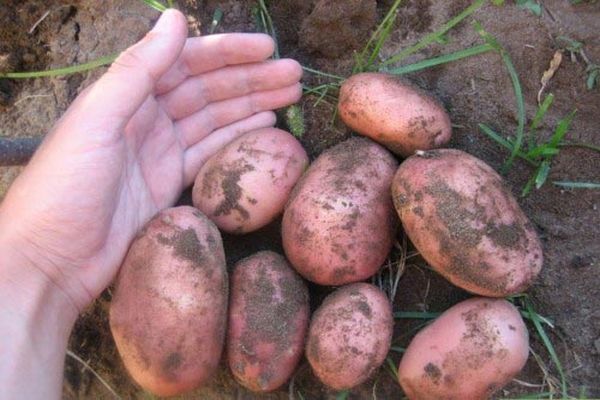
But the variety is demanding for processing against the Colorado potato beetle and wireworm.
How to prepare a place for a garden
They start in the fall. Dig up the soil, and add humus. At the rate of 6-8 kg per m22... The second time is dug up in the spring, applying mineral fertilizers (ammonium nitrate, ammonium and potassium sulfates, chloride stone). Their purpose is not only to enrich the soil composition, but also to protect against pests.
After the bed is ready, start planting the seed.
Correct preparation of root crops
Vegetables are taken out of storage in advance (15–20 days). They are laid out in small containers and left in a lighted place. During this time, it will sprout and grow faster in the ground. The temperature should be +15 ⁰С.
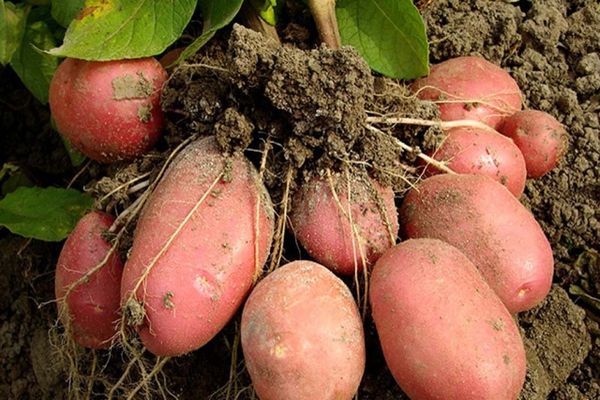
So that the roots do not disappear during cultivation, summer residents recommend scattering it on the floor in one layer.
After the tubers sprout, they can be planted in the ground.
Landing
Planning a landing on the garden should be in April. But it is necessary to correlate with the peculiarities of the climate of the growing region. Since the variety is early, you need to plant potatoes early.
When planting and marking the beds, it must be borne in mind that the tubers of the variety are very large. The distance between the bushes should be 45-50 cm, in rows about 75-85 cm. The seed is placed at a depth of 10 cm.
When, how and what to feed the culture
After the shoots appear, the first feeding is carried out. To do this, use an infusion of mullein or chicken droppings.
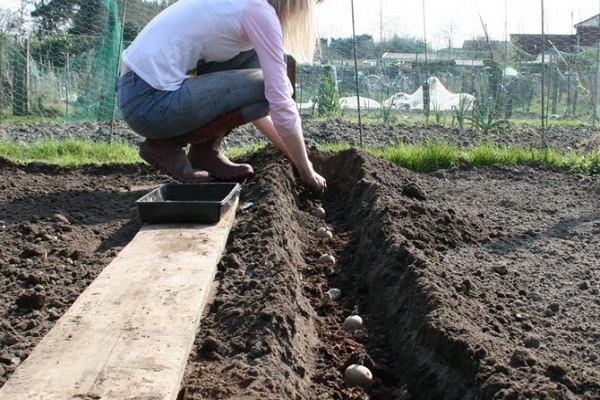
The second dressing is introduced during budding. Urea or potassium sulfate solution mixed with ash is used.
The third time is fed during flowering. It is recommended to use mullein mixed with superphosphate.
Like all early varieties, potatoes are recommended to be treated with preparations that contain magnesium. Use dolomite flour, 50 gr. at 1m2.
All fertilizers are applied on the second day after abundant watering or good rain. Otherwise, the summer resident risks losing the plant, and with it the harvest.
Carrying out timely feeding will help the plant to form tubers. The result will be an excellent harvest.
Caring for care
First of all, while the plant is small, the plantings are loosened. This is done so that the roots receive more air. In addition, all weeds are removed. It is advisable to continue loosening until the plant reaches 15 cm in height.

Then hilling comes to replace. The earth is shoveled to the roots of the plant, forming a mound. According to the description of the Bellarosa potato variety, it is tall. Therefore, this procedure is carried out to support the bush so that the shoots do not lean to the ground.
Its drought tolerance affects the demand for irrigation. There is enough rainfall for the variety.
Cleaning and storage
10 days before the expected harvest date, the tops are mowed. This is the outflow of all juices to root crops. They will be better stored later.

Dig it out using a shovel or other tool. The collected tubers are put in boxes and dried for several days.
Sorting potatoes, an obligatory process before harvesting in cellars and storage. Planting material is selected for the next year. In addition, cut and spoiled tubers are removed separately so that their rotting does not cause spoilage of the rest of the crop.
Store at a temperature not higher than +10 ⁰С. Potatoes retain their presentation, even if they are stored for 6–8 months.
The opinions of summer residents regarding the variety
Numerous positive reviews suggest that the potatoes are really good. Gardeners share their impressions, give advice and recommendations that are so necessary for a novice vegetable grower:
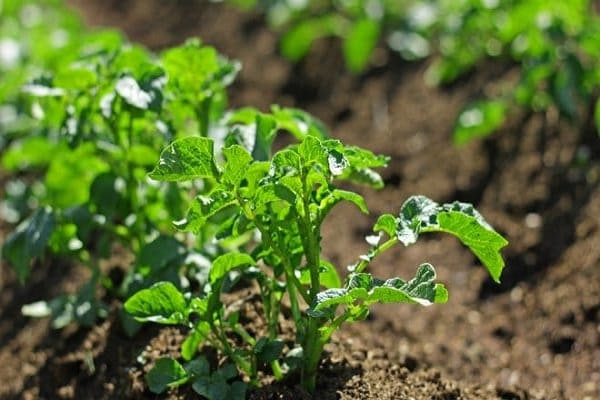
- Nasotke: Affected by the potato yield. We planted 10 bags, collected 160. Everything is smooth, small, only a few bags. The tubers are not boiled. Keeping in mind the peculiarities of the variety, I give advice to all summer residents: - "If drought is expected, use white rose potatoes." The potatoes lie perfectly. In the spring it looks like it has just been assembled.
- Tamara: An unpretentious species with an enviable immunity to disease. The potatoes are delicious. I did not lie for a long time, as it was eaten very quickly. I will definitely plant it next year.
- Alexander: I have been planting this type of potato for several years. I like everything, especially its cooking boiled and fried.
- Tatiana: I recommend that you treat it for phytophthora. Preferably before flowering. Otherwise, a wonderful variety.
Bellarosa is an excellent potato and many recommend growing it to those with arid climates. The variety will delight you with its harvest.
